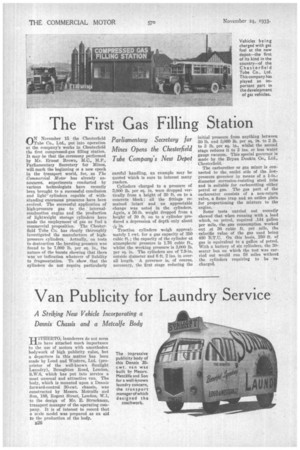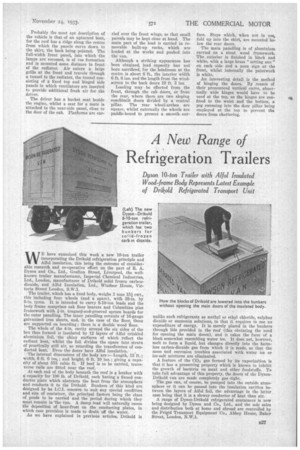Van Publicity for Laundry Service
Page 36

Page 37

If you've noticed an error in this article please click here to report it so we can fix it.
A Striking New Vehicle Incorporating a Dennis Chassis and a Metcalfe Body
ITITIIERTO, launderers do not seem _Lite have attached much importance to the use of motors with unorthodox bodywork of high publicity value, but a departure in this matter has been made by Loud and Western, Ltd. (proprietor of the well-known Sunlight Laundry), Broughton Road, London, S.W.6, which has put into service a most unusual and attractive van. The body, which is mounted upon a Dennis forward-control 30-cwt. chassis, was constructed by Messrs. Metcalfe and Son, 189, Regent Street, London, W.1, to the design of Mr. E. Struckman,. transport manager of the operating company. It is of interest to record that a scale model was prepared as an aid to the production of the body.
826
Probably the most apt description of the vehicle is that of an upturned boat, for the roof has a ridge along the centre from which the panels curve down to the skirt, the back being pointed. The full-width front panel, into which the lamps are recessed, is of vee formation and is mounted some distance in front of the radiator. Air enters a large grille at the front and travels through a tunnel to the radiator, the tunnel consisting of a fixed top and hinged side panels in which ventilators are inserted to provide additional fresh air for the driver.
The driver has a bucket seat beside the engine, whilst a seat for a mate is attached to the near-side panel, close to the door of the cab. Platforms are car
ried over the front wings, so that small parcels may be kept close at hand. The main part of the load is carried in removable built-up racks, which are loaded at the works and pushed into the van.
Although a striking appearance has been obtained, load capacity has not been sacrificed, for the headroom at the centre is about 6 ft., the interior width 6 ft. 6 ius, and the length from the windscreen to the back doors 19 ft. 3 ins.
Loading may be effected from the front, through the cab doors, or from the rear, where there are two sloping coachbnilt doors divided by a central pillar. The rear wheel-arches are square, whilst externally the wheels are paddle-boxed to present a smooth. sur
face. Steps which, when not in use, fold up into the skirt, are mounted below the rear doors.
The main panelling is of aluminium carried on a stout wood framework. The exterior is finished in black and white, with a large brass "setting sun" on each side and a neon sign at the front, whilst internally the paintwork is white.
An interesting detail is the method of hinging the doors. By reason of their pronounced vertical curve, abnormally wide binges would have to be used at the top, so the hinges are confined to the waist and the bottom, a peg recessing into the door pillar being employed at the top to prevent the doors from chattering.




















































































